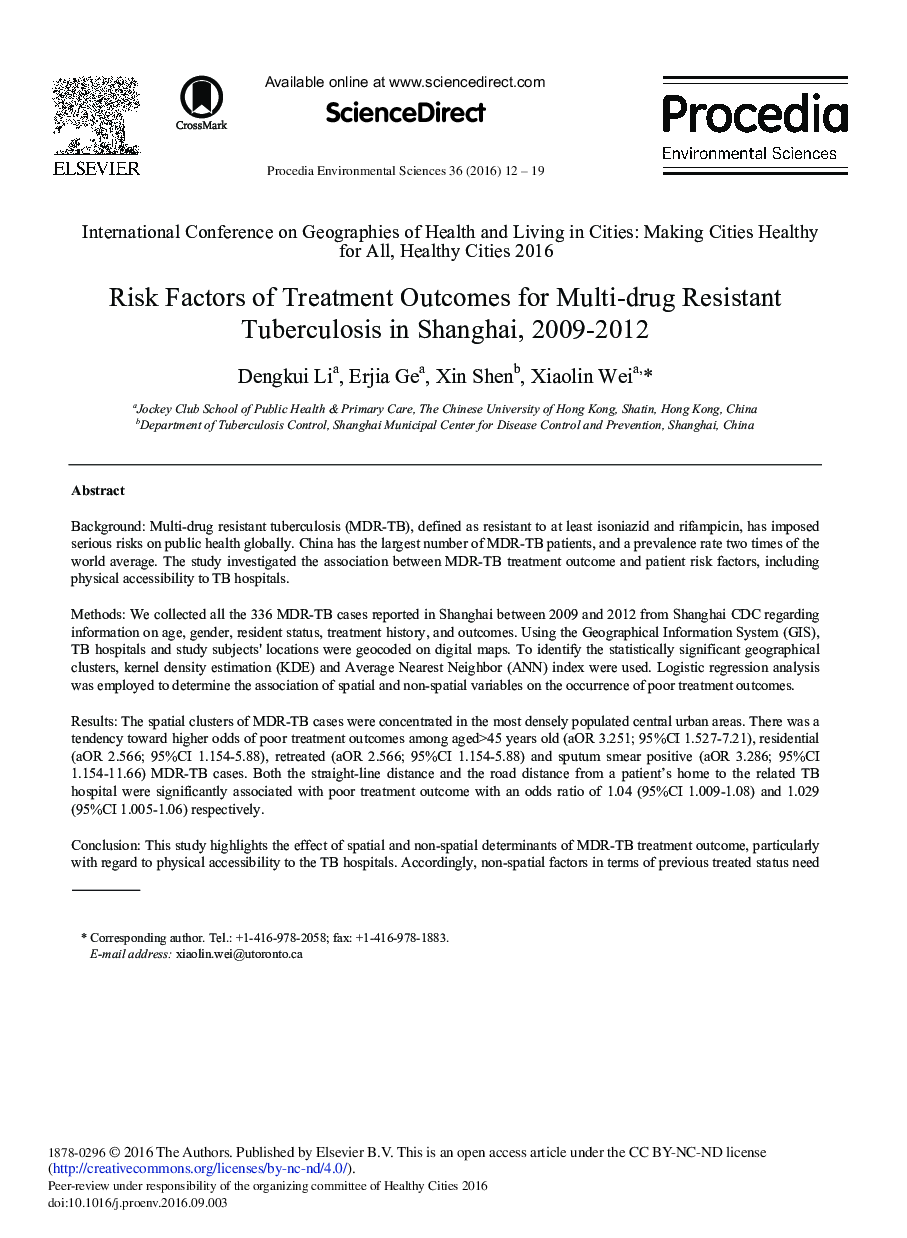| کد مقاله | کد نشریه | سال انتشار | مقاله انگلیسی | نسخه تمام متن |
|---|---|---|---|---|
| 4401317 | 1618608 | 2016 | 8 صفحه PDF | دانلود رایگان |
Background: Multi-drug resistant tuberculosis (MDR-TB), defined as resistant to at least isoniazid and rifampicin, has imposed serious risks on public health globally. China has the largest number of MDR-TB patients, and a prevalence rate two times of the world average. The study investigated the association between MDR-TB treatment outcome and patient risk factors, including physical accessibility to TB hospitals.Methods: We collected all the 336 MDR-TB cases reported in Shanghai between 2009 and 2012 from Shanghai CDC regarding information on age, gender, resident status, treatment history, and outcomes. Using the Geographical Information System (GIS), TB hospitals and study subjects’ locations were geocoded on digital maps. To identify the statistically significant geographical clusters, kernel density estimation (KDE) and Average Nearest Neighbor (ANN) index were used. Logistic regression analysis was employed to determine the association of spatial and non-spatial variables on the occurrence of poor treatment outcomes.Results: The spatial clusters of MDR-TB cases were concentrated in the most densely populated central urban areas. There was a tendency toward higher odds of poor treatment outcomes among aged>45 years old (aOR 3.251; 95%CI 1.527-7.21), residential (aOR 2.566; 95%CI 1.154-5.88), retreated (aOR 2.566; 95%CI 1.154-5.88) and sputum smear positive (aOR 3.286; 95%CI 1.154-11.66) MDR-TB cases. Both the straight-line distance and the road distance from a patient's home to the related TB hospital were significantly associated with poor treatment outcome with an odds ratio of 1.04 (95%CI 1.009-1.08) and 1.029 (95%CI 1.005-1.06) respectively.Conclusion: This study highlights the effect of spatial and non-spatial determinants of MDR-TB treatment outcome, particularly with regard to physical accessibility to the TB hospitals. Accordingly, non-spatial factors in terms of previous treated status need for more attention by public health policy makers, and then more focus should be placed on the health delivery system, particularly in elderly patients. In addition, using the GIS application with a view to MDR-TB distribution and physical accessibility to hospitals is a novel method in Shanghai and it can be developed to reach other related public health disciplines.
Journal: Procedia Environmental Sciences - Volume 36, 2016, Pages 12–19
